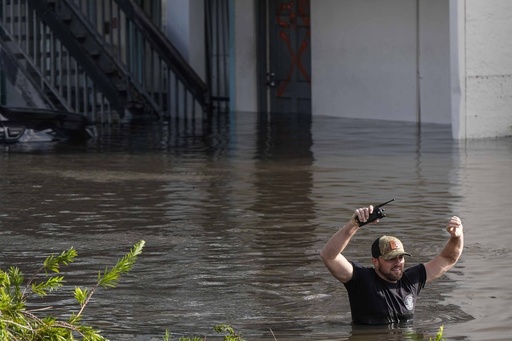Hurricane Milton’s rapid development has raised significant concern in Florida, particularly following the recent impact of Hurricane Helene on the state and the broader Southeast region. As state officials continued to evaluate the extent of the damage on Thursday, Governor Ron DeSantis indicated that the situation had not escalated to the catastrophic levels initially anticipated.
Here’s an overview of Hurricane Milton’s impact, expressed in key figures:
The storm has been linked to at least five fatalities, with these initial deaths attributed to a tornado that struck near Fort Pierce. This number could potentially rise as officials continue their evaluations and searches. For context, Hurricane Helene, which caused immense inland flooding across multiple states, resulted in at least 241 deaths just last month.
The National Weather Service has confirmed around a dozen tornadoes spawned by Milton, although this number is expected to increase as further assessments are carried out. Meteorologist Matthew Elliott noted that many additional tornado reports are under investigation. He also mentioned that the current record for the most tornadoes confirmed from a single hurricane remains at 118, occurring with Hurricane Ivan in 2004. Earlier this year, Hurricane Beryl recorded 65 confirmed tornadoes, making it the fifth-highest on record.
In terms of wind speed, Milton saw an astonishing increase of 92 miles per hour within just 24 hours. Since 1950, only eight storms have experienced such a rapid increase. Experts suggest that climate change is contributing to the rise in such powerful storms, with warming ocean temperatures serving as a crucial energy source for their intensification. Milton initially achieved Category 5 status with winds reaching 180 mph while in the Gulf, but it weakened to a Category 3 as it approached the coastline due to wind shear. At the time of landfall, sustained winds were recorded at 120 mph, sufficient to cause significant destruction.
The storm surge, which often proves to be one of the most damaging effects of hurricanes, was estimated to be between 8 and 10 feet in Sarasota County, which was less severe than previous forecasts predicted. For comparison, Hurricane Ian produced a devastating 15-foot storm surge in Fort Myers Beach two years prior, while Hurricane Michael’s surge reached 14 feet along portions of the Florida Panhandle.
Historically, Hurricane Irma, a Category 4 storm from 2017, led to 10 direct fatalities in the U.S. and 82 indirect fatalities, with the majority occurring in Florida. Following that, Hurricane Michael, categorized as a Category 5 in 2018, directly caused the deaths of eight individuals in Florida and Georgia and resulted in an additional 43 indirect fatalities.
In terms of infrastructure, Milton left 3.4 million homes and businesses without power across Florida, a substantial figure representing nearly 30% of tracked customers statewide as indicated by poweroutage.us.
This year’s hurricanes have placed immense strain on Florida’s emergency services. Milton’s landfall marks the third hurricane to impact the state this year, following Hurricane Debby, a less powerful Category 1 storm that caused flooding across Florida and the Southeast in August. According to senior research scientist Phil Klotzbach from Colorado State University, this marks the sixth instance in history that Florida has experienced three hurricanes making landfall in a single year, with similar occurrences recorded in 1871, 1886, 1964, 2004, and 2005.
In the context of 2004, while three hurricanes made landfall in Florida, Hurricane Ivan made landfall just west of the Alabama-Florida border, preventing a fourth hurricane from impacting the state the same year.
